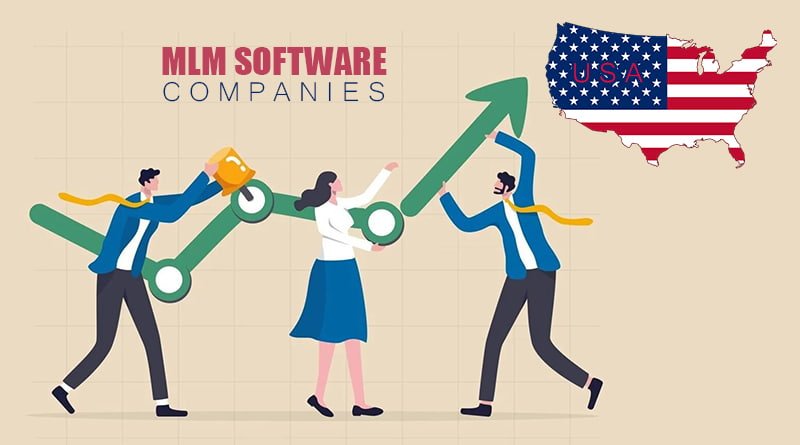MLM companies in USA play a significant role in the business landscape, offering individuals opportunities to earn income through direct selling and building networks of distributors.
With a diverse range of products and services, MLM companies in USA have become a prominent feature of the entrepreneurial ecosystem, attracting millions of participants seeking financial independence and flexibility in their careers.
However, the industry is not without controversy, as MLM companies in USA have faced scrutiny regarding their business practices and regulatory compliance.
This article will explore the landscape of MLM companies in USA, examining their impact, challenges, and future outlook.
Historical Background MLM companies in USA

The historical background of MLM companies in USA traces back to the late 19th and early 20th centuries with the emergence of direct selling and network marketing concepts.
The roots of modern MLM can be found in the establishment of companies like Avon (founded in 1886) and Tupperware (founded in 1946), which pioneered the direct selling model.
However, the MLM industry as we know it today began to take shape in the 1950s and 1960s with the founding of companies like Amway (1959) and Herbalife (1980), which popularized the multi-level marketing business model.
During the post-war economic boom, MLM companies experienced rapid growth as individuals sought opportunities for supplemental income and entrepreneurship.
The MLM industry expanded further in the 1970s and 1980s with the introduction of new products and the adoption of innovative marketing strategies, such as motivational seminars and incentive trips.
However, MLM companies in USA also faced challenges and controversies during this period, including legal scrutiny over allegations of pyramid schemes and deceptive marketing practices.
In response, regulatory agencies like the Federal Trade Commission (FTC) began to monitor the industry more closely and enforce stricter regulations to protect consumers and prevent fraudulent schemes.
Despite these challenges, the MLM companies in USA industry continued to evolve and adapt, embracing new technologies and diversifying product lines to remain relevant in an ever-changing market.
Today, MLM companies in the USA are a prominent feature of the entrepreneurial landscape, offering a wide range of products and services and providing opportunities for millions of individuals to start their own businesses and achieve financial success.
Blogs On Multi Level Marketing
Market Analysis
Market analysis is a crucial step for understanding the landscape of MLM companies in USA. Here’s how it’s typically approached:
- Market Size and Growth: Assess the size of the MLM companies in USA and its growth trends over time. This includes evaluating factors such as the number of MLM companies in USA, total sales volume, and market share of major players.
- Industry Segmentation: Identify the different segments within the MLM industry, such as health and wellness, beauty and cosmetics, financial services, and home goods. Analyze the market dynamics and competitive landscape within each segment.
- Target Market Demographics: Understand the demographics of MLM participants and consumers in the USA. This includes factors such as age, gender, income level, education, and geographic location. Identify trends and preferences that may influence purchasing behavior.
- Competitive Analysis: Analyze the competitive landscape of MLM companies in USA. Identify major players, their market share, product offerings, pricing strategies, and distribution channels. Evaluate their strengths, weaknesses, opportunities, and threats.
- Consumer Behavior: Study consumer behavior within the MLM market, including purchasing habits, brand loyalty, and motivations for participating in MLM programs. Identify key factors that influence consumer decision-making and preferences.
- Regulatory Environment: Assess the regulatory environment governing MLM companies in USA. Understand the relevant laws, regulations, and guidelines set forth by federal and state regulatory agencies, such as the Federal Trade Commission (FTC) and state attorney general offices.
- Market Trends and Opportunities: Identify emerging trends and opportunities within the MLM industry. This includes innovations in product development, changes in consumer preferences, advancements in technology, and shifts in marketing strategies.
- SWOT Analysis: Conduct a SWOT (Strengths, Weaknesses, Opportunities, Threats) analysis to evaluate the internal and external factors affecting MLM companies in USA. This helps to identify areas of competitive advantage and areas for improvement.
By conducting a comprehensive market analysis, MLM companies can gain valuable insights into the competitive landscape, consumer behavior, regulatory environment, and emerging trends, which can inform their business strategies and decision-making processes.
Green World Multi-Level Marketing
Challenges and Controversies

Challenges and controversies have long been intertwined with the multi-level marketing (MLM) industry in the USA. One significant challenge is the perception of MLM companies as pyramid schemes, where the focus is on recruiting new members rather than selling actual products or services.
This perception has led to increased regulatory scrutiny and legal challenges for MLM companies, with some facing lawsuits and fines for deceptive practices.
Additionally, there are concerns about the high dropout rates among MLM participants, as many struggle to achieve the promised financial success and ultimately leave the business disillusioned.
Moreover, the complex compensation structures and sales tactics employed by some MLM companies have raised ethical questions about the fairness and transparency of the industry. Overall, addressing these challenges and controversies is essential for the long-term sustainability and credibility of the MLM companies in USA.
Starting a multi-level marketing company: Comprehensive guide
Impact on Economy and Society
The impact of multi-level marketing (MLM) on the economy and society in the USA is multifaceted. On one hand, MLM companies contribute to economic growth by providing employment opportunities and generating revenue through the sale of products and services.
They also empower individuals to become entrepreneurs and earn income on their own terms, contributing to economic mobility and financial independence. Additionally, MLM companies in USA often support charitable causes and community initiatives, further benefiting society.
However, MLM’s impact is not without controversy. Critics argue that the MLM business model disproportionately rewards top distributors at the expense of those lower down the hierarchy, leading to income inequality and financial hardship for many participants.
Moreover, the recruitment-focused nature of MLM can strain personal relationships and communities, as individuals may feel pressured to join or recruit others into the business. Additionally, the potential for deceptive practices and false promises within the industry can erode trust and damage the reputation of MLM companies.
Overall, the impact of MLM on the economy and society is complex, with both positive and negative implications.
It is essential for policymakers, regulators, and industry stakeholders to address the challenges and ensure that MLM operates ethically, transparently, and in the best interest of all participants and society as a whole.
Future Outlook

The future outlook for MLM companies in USA is influenced by a variety of factors, including technological advancements, shifting consumer preferences, regulatory changes, and economic conditions.
While the industry has faced challenges and controversies in the past, it continues to evolve and adapt to changing dynamics.
One trend that is likely to shape the future of MLM is the increasing use of digital technology and social media platforms for sales and recruitment.
MLM companies in USA are expected to leverage these channels to reach a broader audience and engage with consumers more effectively. Additionally, advancements in data analytics and artificial intelligence may enable MLM companies to personalize marketing efforts and improve targeting strategies.
However, regulatory scrutiny is also expected to intensify, particularly regarding the distinction between legitimate MLM operations and illegal pyramid schemes. Regulatory agencies such as the Federal Trade Commission (FTC) are likely to continue monitoring the industry closely and enforcing compliance with consumer protection laws.
Moreover, consumer demand for transparency, authenticity, and sustainability is expected to influence MLM companies’ product offerings and marketing strategies. Companies that prioritize ethical business practices, quality products, and genuine relationships with distributors and customers are likely to thrive in the long run.
Overall, while the future of MLM in the USA may present both opportunities and challenges, companies that embrace innovation, transparency, and ethical conduct are well-positioned to succeed in a rapidly evolving business landscape.
Conclusion
In conclusion, MLM companies in USA have become a significant presence in the business landscape of the USA, offering opportunities for entrepreneurship and income generation to millions of individuals.
While the industry has faced challenges and controversies, including regulatory scrutiny and criticisms of its business practices, it continues to thrive and evolve.
MLM companies in USA play a role in driving economic growth by providing employment opportunities, generating revenue, and fostering innovation. They also empower individuals to start their own businesses and achieve financial independence.
Other Questions
- What does MLM stand for?
MLM stands for multi-level marketing.
- What is the significance of MLM companies in the USA?
MLM companies offer opportunities for entrepreneurship and income generation to individuals.
- What are some challenges faced by MLM companies?
Challenges include regulatory scrutiny, criticisms of business practices, and concerns about pyramid schemes.
- How do MLM companies contribute to the economy?
They provide employment opportunities, generate revenue, and foster innovation.
- What should MLM companies prioritize to maintain trust and credibility?
They should prioritize transparency, ethical conduct, and compliance with regulations.




